Australia So Much to See
South Western Queensland - Quilpie
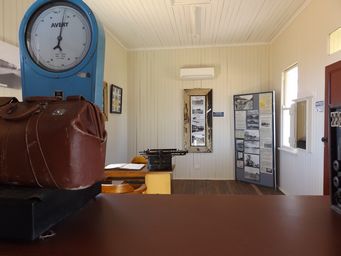
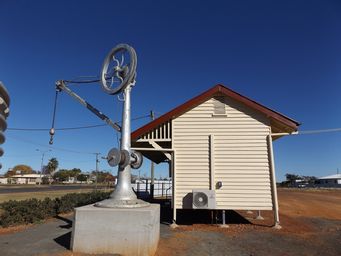
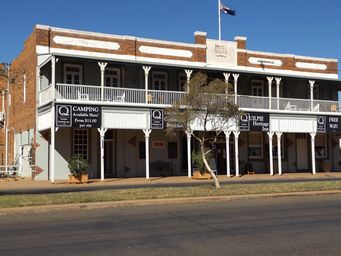
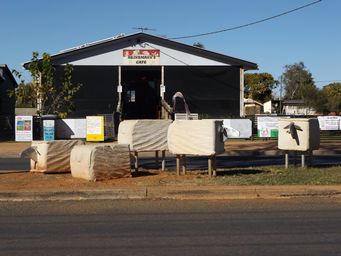
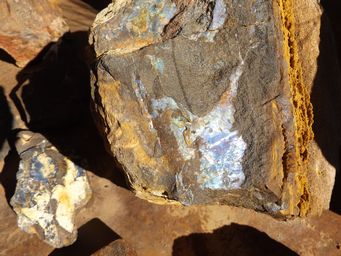
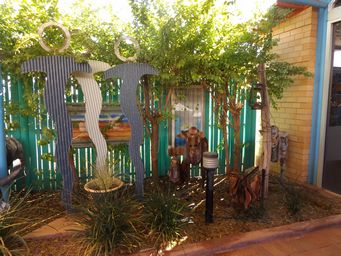
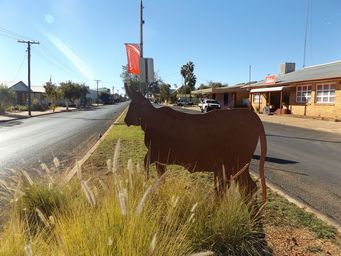
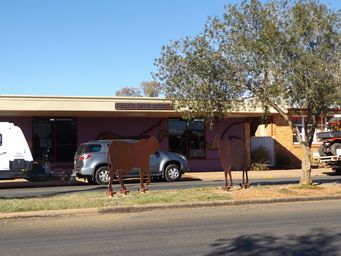
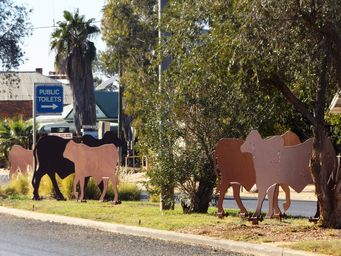
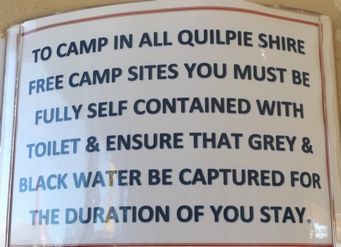
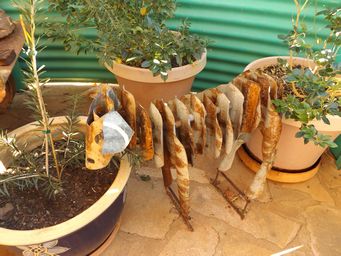
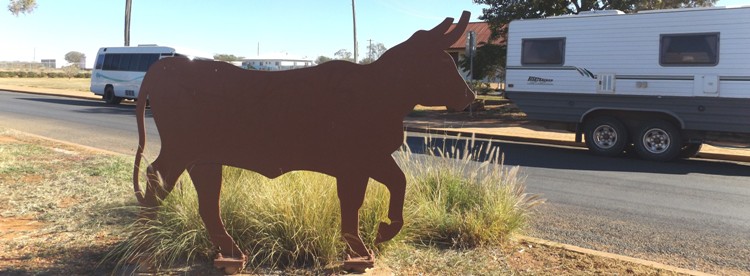
This appealing town with its wide main street and animal silhouettes in the median strip is well known for boulder opals, oil wells
and sheep and cattle stations. Boulder opals have an ironstone backing, forming an attractive and durable gemstone. There
are areas for fossickers (with permits) in the opal fields between Quilpie and Yowah. Council provides a picnic and opal
noodling area on the west side of the town, where a fossickers permit is not required.
The name of the town comes from the local Aboriginal word for the Stone Curlew, one of many birds that can be seen in this area.
While the town was not gazetted until 1917 when the railway line reached the area, graziers had been in the region since the
1860s, and opal miners since the 1880s. Due to the war, the rail line was never extended, leaving Quilpie at the end of the
line. Prior to the railway, Adavale was the main town for the area.
The Visitor Information Centre has a display area representing the history of industries and activities of the area, and a small art gallery. Both the military history museum and the small railway station are adjacent, with the station being relocated from Cheepie in February 2017 for restoration and display.
With a comfortable sitting area, the Visitor Centre offers free
WiFi, which is also available at the library.
Bush Camping for self contained is allowed on state or council owned land outside of the Quilpie town centre with the exception of the Opal Fossicking area. Overnight camping is permitted on the Common, however users of the sites must be ‘self-contained’ and seasonal restrictions on length of stay may apply. No fee is charged for use of a Bush Camping Site. A minimum requirement to be deemed ‘self contained’ is that black water is captured and can be stored for a minimum of three nights, and dumped in an appropriate facility. Further, grey water must be captured or redirected away from water courses.
Heinemann's Café in the main street is built to look like you are entering a shearing shed, and had a display of ‘wool pack sheep’ outside.
Once around 20,000 bales of wool a year was sent from Quilpie, but now with declining sheep numbers and more
frequent drought years, only about 2,000 bales are produced.
Much of the main street was burnt in 1926 due to a lack of water. The need for a permanent water supply eventuated in the first Artesian
bore being sunk in 1933. Hot Artesian water was used for electricity generation between 1952 and 1963. With adequate water,
a wool scour plant was set up at the site of the present airport, and operated from 1935 to 1951. A small museum near the site
gives information about the wool scour, and of solo pilot Amy Johnson’s landing at Quilpie in 1930, mistaking it for Charleville due
to the extension of the railway line.
There is something for everyone when it comes to camping.
Quilpie is on the Bulloo River, and short term self contained
camping is permitted by the river at the town common on the eastern edge of town. Grey water may not be deposited near the river. This site unserviced and fee free.
There is a public access dump point at John Waugh Park in Quarrion Street. Quarrion is the local name for the Cockatiel
(Weiro). Most streets have been named after birds, using their common names.
To the north east of the town, The Lake, Lake Houdraman, is on a station with serviced camping on the east side of this freshwater
lake, and is popular for bird watching, fishing and fishing. Self contained camping is permitted along the western edge of the
lake. You must be able to contain your grey water when camping at The Lake.
The Channel Country Tourist Park is one of the very best appointed caravan parks we have been to. See my detailed description andreview.
Our continuing journey took us through flat land with sheep and cattle stations, and more oil wells. Eighty kilometres east
of Quilpie and a little off the Diamantina Developmental Road where it deviates away from the railway line, the ghost town of Cheepie boasts
a population of one. Little is left but a railway tank, with the station building having been moved to Quilpie, a few derelict
buildings, and the postal agency store. Trains no longer stop at Cheepie.
A further fifty kilometres east and eighty kilometres
west of Charleville, Cooladdi now consists of the colourful Fox Trap Hotel and roadhouse. The town was originally
near the railway siding but has been completely abandoned, in part due to flooding. The Roadhouse/Hotel boasts a population
of four.
Before reaching Charleville, we crossed the Ward River on a high bridge, indicating the amount of water that
can come through in flood years. An alternative older bridge has been bypassed and the old road is used to access a river pool
which is a traditional picnicking, fishing and camping spot.
From here to Charleville the country became undulating until
we reached Charleville. More to come as we stay a while and tour Charleville, with a key reason for our visit being the Cosmos Centre
for an evening star gazing.